Europe’s most beautiful places
1. Norwegian Fjords, Norway
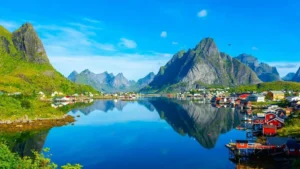
Fjords exist in only a handful of countries, and Norway is home to the longest, deepest and most spectacular. Unfurling from the Norwegian Sea, these cavernous inlets stretch the length of the country’s coast, harbouring the type of scenery that will make you audibly gasp. I was particularly smitten with the pastoral Nordang Valley, where near the village of Oie you’ll find fresh-out-the-sauna locals plunging into popsicle-blue water (no matter the weather). And if all those thundering waterfalls and forested mountains get a bit boring, the fjords are home to a couple of surprisingly buzzy little cities: Stavanger and Bergen make for ideal bases to explore the region.
2. Jajce, Bosnia and Herzegovina
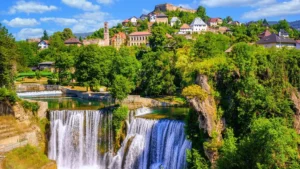
Bosnia and Herzegovina has no shortage of beautiful places, but it takes a brave voice to rank anywhere above the charms of Jajce. The magnificent 22 metre Pliva Falls take top billing, a spectacular image framed by the rising town crowned by a fortress that looms large in the country’s long and storied history. The Pliva Lake and its achingly gorgeous mills sit just outside the town (be sure to stay at Hotel Jezero), while the city’s collection of Ottoman architecture, Christian churches and monasteries, mysterious catacombs, and Yugoslav history showcase Bosnia and Herzegovina at its absolute best.
3. Xerocambos Beach, Greece
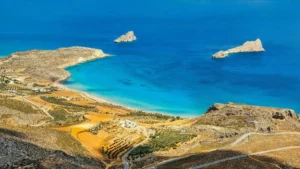
Xerocambos beach in Crete has the Mediterranean’s longest coastline along with some 6,000 stunning islands so beautiful beaches are standard. Even so, Xerocambos’s silky sand strands fringed by mirror-clear waters in the wilder, lesser-visited southeastern half of Crete Island are stand-out special. Be warned, however: this blissful beach is seriously off the beaten track. To get there you’ll need to follow winding roads from Sitia town to the traditional mountain village of Armeni. From here the road – said to be one of Greece’s scariest – loops like a liquorice coil along the dizzy edge of a deep gorge to reach near-deserted coves far below. Trust us: it’s worth it.
4. Alberta Street, Riga, Latvia
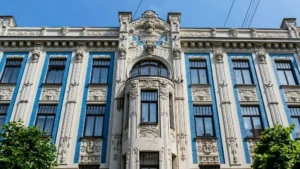
This quiet street in the center of Riga is one of the epicenters of European Art Nouveau. Stretching just 255 meters, almost every building on this street is an architectural monument. Stroll down Alberta Street to enjoy the vibrant facades adorned with wrought-iron balconies, elegant archways, and sculptures with expressive faces. Then, if you crave more – and I’m sure you will – find more iconic architectural gems just around the corner. In total, there are over 800 Art Nouveau buildings in Riga, most of which are densely located in the city center.
5. Lake Bled, Slovenia
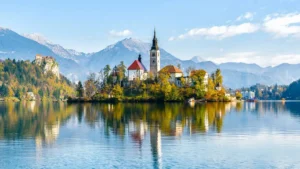
My first glimpse of Lake Bled was my colleague showing me where she got engaged, on the banks of the lake with blue-green water shimmering behind them. So last year, I flew to Ljubljana and hopped on a bus there myself. On a clear day, the glassy water reflects the trees and green mountains that flank the lake, as if it’s brushing the clouds away. Your eyes are instantly drawn to the little island in its centre, which is home to the Church of Mary the Queen. And that soft chiming sound? That’s the wishing bell in the 52-metre bell tower, rung by tourists as a reward for climbing the 99 steps to the top.
6. Alberobello, Apulia, Italy
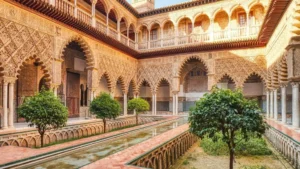
I don’t use ‘fairytale town’ liberally, but towns really don’t get much more whimsical than Alberobello. Creeping up the hills of this Puglian comune are thousands of traditional ‘trulli’, houses that look like they’d home hobbits rather than humans, made from white limestone and topped with a jaunty conical roof. You can only find trulli in this part of the world, so a trip to this protected heritage site is well worth the effort. Originally constructed as storage spaces and temporary shelters for livestock, the town’s trulli today have been converted into hotels, guesthouses, cafés, gift shops – and yes, actual homes.
7. Vestmannaeyjar, Iceland
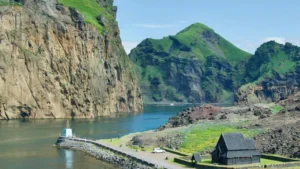
Vestmannaeyjar is one of those places that makes you feel like you’ve reached the end of the earth (in a good way). A three-hour car ride and short ferry from central Reykjavik, and you’ll come up to nothing but tall, towering cliffs, reflecting light and sending it dancing into the sky. You’re now in Vestmannaeyjar – or the Westman Islands – a 4000-population cluster of islands off the south coast of Iceland. The entire island is beautiful, where little wooden houses are backlit by rolling hills and jagged cliff faces, and baby puffins waddle around at your feet. But it’s probably most famous for the Elephant Rock, which can be viewed up seriously close if you hitch a speedboat ride.